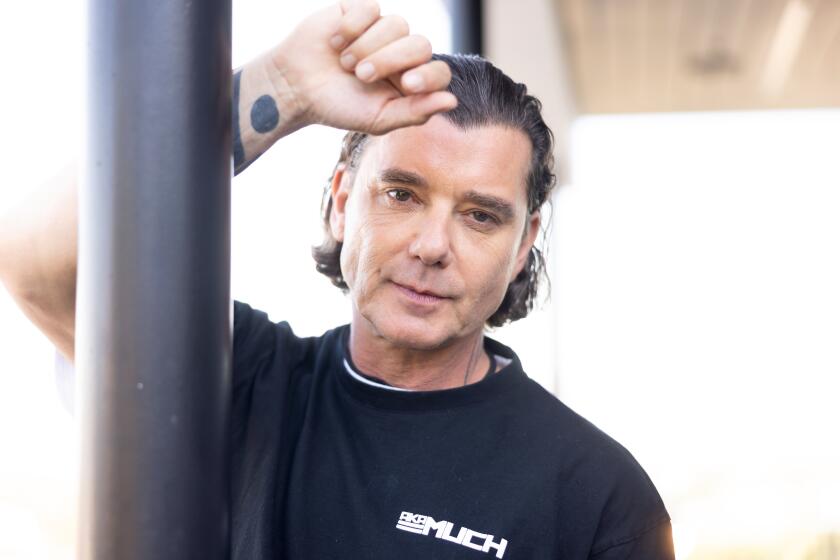Altered Visions
- Share via
At the Century Gallery in Sylmar, photography is the medium of the moment, but you won’t find a straight, proper photograph in the house.
Artists in the show, “The Physically Altered Photograph,” steer clear of purity, mixing processes and surfaces, subjecting the normally lab-intensive medium of photography to “physical” treatments beyond the dark room.
If the medium is still generally about the illusion of clarity and presenting a reliable window on reality, the work here approaches heresy. Of course, that’s the point. These artists are intrigued by the prospect of extending or reorienting the medium in the service of new modes of self-expression.
Their rebellious acts, in themselves, aren’t enough to ensure maturity to match their creative will, as the art here tends to have a tentative, unfinished quality. But the high points in the show and the deviations and variations on a medium are reward enough.
Instead of photographic paper, large hunks of canvas are Don Cole’s surface of choice. On these, he blends abstract splatterings and odd fragments of recognizable figures, printed on areas of emulsion painted on the canvas. These figures appear like apparitions in the fog of abstraction. Our sense of medium is carefully confused: photography meets painting meets the almost sculptural presence of rumpled canvas.
Painterly effects also distinguish Willie Middlebrook’s pieces, with figures floating amid dripping and seeping imagery. His is a layering aesthetic, where reality and hands-on invention alternately wrestle and embrace, in a way that traditional photography could not.
Mark Kienholz shows examples from his series of portraits of two young sisters, with emulsion applied to plaster and glass to give the work a mystical or mock-antique air, but they end up engaging unusual treatments for fairly pedestrian images. Snapshots by any other name or process are still snapshots.
For Lydia Dickerson, the combination of photography and other materials--oils, varnish, tape, found text--conspires toward a collage aesthetic. In “Isolated Feelings,” she uses paint to edit an already obscure landscape photograph, applying a kind of rough “white-out” effect that could symbolize the sense of alienation from one’s surroundings.
Janet McKaig’s works are the most graphic, and sometimes gruesome, in the show, and also those with the most image-altering art process. Original photographs are copied with the Cannon 800 Laser printer, cut and pasted, and then painted over, with a final result that effectively blurs its photographic conception and becomes painterly.
That image-mutation process adds to the sense of disorientation. It also underscores the messages not-so-subtly embedded in her art, often as not, projecting a social sting. In “Dolls,” we find effigies of Newt Gingrich, Mark Fuhrman, Princess Diana and a “Bosnia Doll”--figures who have become abstract icons through media exposure--in images where innocence is at odds with the world’s cold realities.
With its suggestion of barbarism in the kitchen, “Bon Appetit” could be a plea for vegetarianism. A pig’s head is brandished like a conquest, and a decaying human head sits on the counter, while a chef with a bloody bib mugs for the camera. The ironic punch line here is that the camera, per se, is not the almighty eye in this case, but just one step along the path to a finished image.
BE THERE
“The Physically Altered Photograph,” through Dec. 12 at Century Gallery, 13000 Sayre St., Sylmar. Hours: 10 a.m.-4 p.m. Monday-Friday, noon-4 p.m. Saturday; (818) 362-3220.
More to Read
The biggest entertainment stories
Get our big stories about Hollywood, film, television, music, arts, culture and more right in your inbox as soon as they publish.
You may occasionally receive promotional content from the Los Angeles Times.










